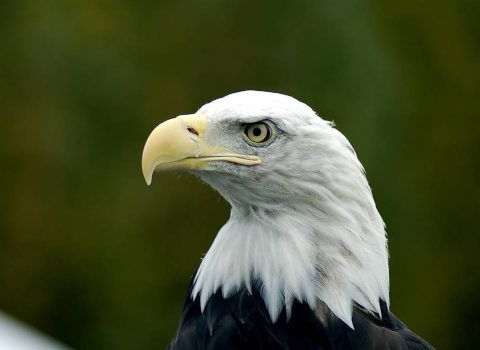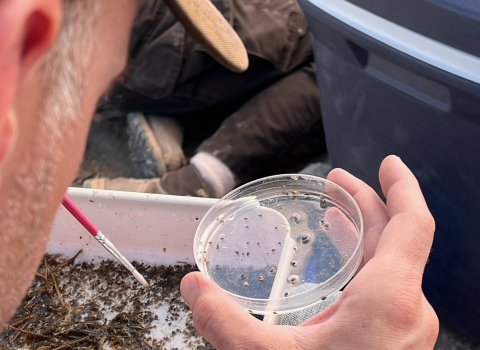In spring and summer, birds and other wildlife are busy raising their young. What should you do if you find a baby bird that seems to have fallen from its nest or coyote pups that seem to have no parents around?
Your instinct is to help. But before you act, know this: most efforts to save apparently abandoned or injured birds and wildlife probably do more harm than good.
What CAN You Do?
- If you find a young bird (or any species of wildlife that seems sick, injured, or in trouble), usually the best thing to do is to leave it alone.
- Why? For one thing, it’s the law. In North America, it is illegal to disturb most wildlife species. “Disturb” includes removing animals from their homes.
- Also, research shows that the “leave it alone” approach is usually best for the animal. Most animals that seem to be in trouble are actually fine.
- And stepping back is the best thing for you. Remember: sick and injured wild animals are still wild. An injured animal is more likely to be aggressive; a sick animal could be carrying a disease.
Fledglings will be Fine
If you see a young bird on the ground, it’s probably a fledgling—a nestling that has developed to the point where it’s ready to leave the nest and find its own place to live. Just leave it alone.
The parent birds are almost certainly nearby, listening for the fledgling’s calls to locate it, continuing to bring it food, and protecting it by driving away predators. Soon, the fledgling will be able to fend for itself.
Put Nestlings in their Nests
Very rarely, you might find a nestling on the ground—a young bird that is featherless, with eyes that are not yet open. It might have been blown from the nest during a storm, or perhaps a predator destroyed the nest.
Without help, nestlings will probably die. The best thing you can do is to place the nestling back in the nest—if you can find it. It will likely be within a few yards of where you found the bird. If you can’t locate the nest, carefully place the nestling in a safe place—for example in the shade of a nearby shrub. The parents will continue to care for it.
A Refuge is Different from a Rehab Center
What if you’ve found, not a fledgling or nesting, but an animal that’s sick or injured? The mission of the U.S. Fish and Wildlife Service is to conserve wildlife by protecting and managing the lands and waters where they live; however, we do not offer wildlife rehabilitation services or animal control services. We are not equipped to provide optimal care to orphaned or injured wildlife. Instead, please contact a licensed wildlife rehabilitation facility.
Note: If you believe the animal is a rare or endangered species, please reach out to our biologist for a consultation (760-348-5278). We will try to connect you with the right rehab facility.
Find a Wildlife Rehabilitator Near You
Closest to the Imperial Valley is:
- the Coachella Valley Wetlands Wild Bird Sanctuary, a licensed nonprofit rehab facility. It’s open from 9 a.m. to noon, seven days a week.
- Call 760-347-2647.
Another option is Project Wildlife, part of the San Diego Human Society.
- This is a large-scale licensed facility that will take in all types of wildlife including birds, mammals, and reptiles.
- It’s open from 9 a.m. to 5 p.m. seven days a week.
- Call 619-299-7012.
You can find a complete list of wildlife rehabilitation facilities by county on the website of the California Department of Fish & Wildlife: https://wildlife.ca.gov/Conservation/Laboratories/Wildlife-Investigations/Rehab/Facilities.



